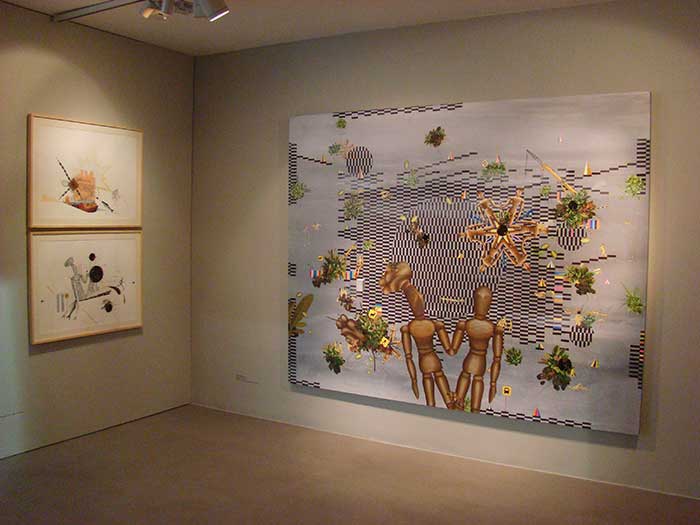The Possibility of Being
The Possibility of Being is a curatorial engagement with five artist immersed in image making with a constant dialogue with Painting and Drawing both in terms of medium and practice. The curation is dedicated to (re) exploring linkages between the image, the socio-political and painterly practices as we come to the end of an era which was (is being) called Contemporary.
Among the many developments that marks the term contemporary has been the dominating focus on content that prioritize socially and politically charged subject matters over stylistic experimentation and investigations over Form and Language. It is also marked by its affiliations to the idea of digital progress. As the digital (r) evolution settles down, we are in a position to understand that Digital is not just a technological shift, it is also an aesthetic trend. In an age where we are surrounded by digital technology, this splitting of the Digital allows us to explore beyond the aesthetic measures of purity, pristine images, perfect copies and powerful (spectacular) illusions.
Since the 1990’s postmodern culture and contemporary art was principally associated with photography, film, installation and text-based interventions. Painting lost its culturally privileged status and judged as an intrinsically conservative or reactionary aesthetic form. Post the onslaught of the digital (r)evolution, we reached a point where ‘Painting’ was declared dead as political and cultural agency; and it was only as a commodity that the relevancy of ‘Painting’ was acknowledged. This seeming fissure in history allows (forces) us to split Paintings in terms of medium and practice. At the height of the digital age (As the neo liberal was defined and celebrated as the era of new media and the ‘futuristic’), we witnessed artists producing paintings that looked like digital prints (hyper realistic, no trace of artistic labour, smooth finished cosmopolitan flat surfaces).
However, as we peaked inside the contemporary trend, silently inside artist studios we see a reassertion of analogue aesthetics. This return to analogue in a digital age has led to both painting and drawing have changing in terms of medium, concept, viewership and practice.
In a sense this curation becomes a project in cultural archaeology or ritual nostalgia. Slowly there is a growing recognition that painting practices continue to hold important contributing agency in shaping new cultural directions. These new directions in taste and cultural archaeological position disturb the meaning of ‘new media’ by opening doors for old media to stand as an vanguard act. That is why the Possibility of Being. For a post-1950s generation, such a ‘reconstruction’ of analogue aesthetics has lead recognition that painting practices today are contributing to new cultural directions.

